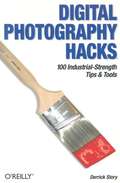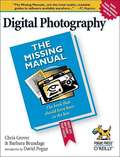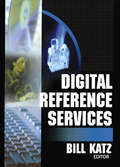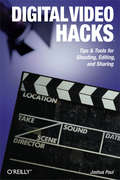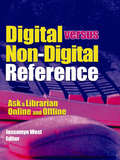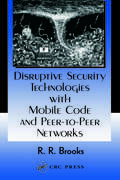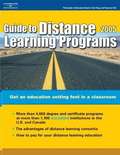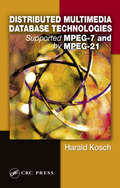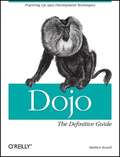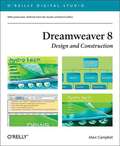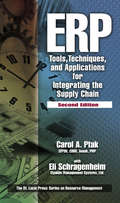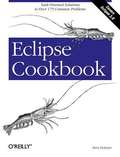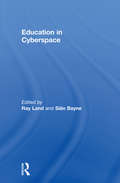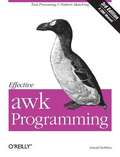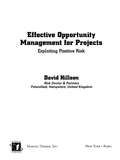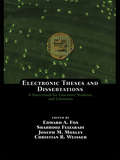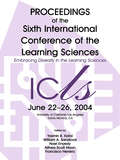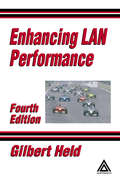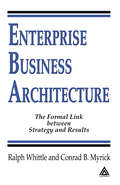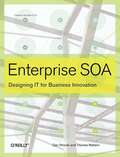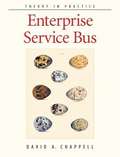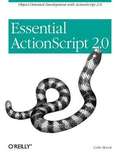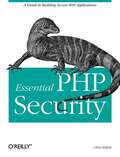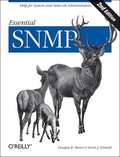- Table View
- List View
Digital Photography Hacks: 100 Industrial-Strength Tips & Tools
by Derrick StoryYour digital camera is more than a new incarnation of your old film camera. Yes, it still produces photos, but it also offers new outlets for creativity, including instant gratification of seeing your photos now, the ability to experiment without worrying about expense, the technology to fine-tune your photos with advanced professional techniques, and the means to share your work instantaneously with anyone, anyplace in the world. It's no wonder that digital cameras are outselling traditional cameras for the first time ever. But the question most digital camera users ask is this, "How do I get from taking 'decent' photos to doing the things I'd really like to do? How do I tap into that potential?" Digital Photography Hacks is your passport to taking the kind of digital photos you've always aspired to. Written by Derrick Story, photographer and author of Digital Photography Pocket Guide and other books, it goes beyond the standard fare of most digital photography books--such as camera basics, understanding memory cards, and when to use a flash--to the things that professional photographers have learned through thousands of shots' worth of experience, years of experimentation, and fiddling and hacking. The book includes a foreword by photographer Rick Smolan, author of America 24/7. With exquisite, full-color photos throughout, the book presents a collection of tips, tricks, and techniques for photographers ready to move beyond the basics. And if you don't have the latest in digital camera photography, this book will show you how to extend the life and functionality of your existing camera. All the hacks in the book are platform-agnostic, designed for use on both Mac on Windows-based computers. You'll find 100 proven techniques in the areas of: Daytime and nighttime photo secrets Flash magic Digital camera attachments The computer connection Photoshop magic Fun photo projects Camera phone tricks This book is for the photographer you are now, and the one you want to be. Digital Photography Hacks is for the creative adventurer who resides in each of us.
Digital Photography: Expert Techniques
by Ken MilburnThis absorbing book, by professional photographer and author Ken Milburn, offers a ton of expert advice to those who are ready to move to the next level with digital photography. Rather than a general discussion of photography principles, Digital Photography: Expert Techniques focuses on workflow: time-tested, step-by-step procedures based on hard-nosed experience by and for genuine practitioners of the art. The book's conversational tone presents detailed information about what to look for in today's affordable high-end digicams, how to use simple techniques and equipment to shoot breathtaking shots, instructions on shooting great panoramas, dos-and-don'ts for creating better Photoshop masks, and professional digital darkroom techniques for everything from knockouts to restoration to transforming your photos into watercolors. It even shows you how to get your most prized photographs printed and ready for exhibition. Contents include: Understanding your digital camera from the inside out. Creating effects with the camera: making panoramas, high-resolution matrixes, infrared photos, and more. General composition and managing your workflow. Using the digital darkroom and Photoshop CS to make your images professional caliber. Understanding the power of Photoshop CS selections and masks. Using special effects to save what's good, and get rid of the bad and the ugly. Creating fictitious photos: bend and wrap images to fit an object, insert a more interesting skyscrape, and more. Professional color and tonal management Creating portfolios and presenting your images on the Web. Digital Photography: Expert Techniques is in four-color front to back, allowing you to see each step in the Digital Photographer's workflow, including the steps in-between. Serious photographers, including professionals, who want to take advantage of the unique creative powers available through digital photography and digital image processing will find this problem-solving book invaluable.
Digital Photography: The Missing Manual
by Barbara Brundage Chris GroverDigital Photography: The Missing Manual helps you to take beautiful digital pictures -- of your baby, your trip to Paris, your new pet iguana--and then share the stunning results with your friends and family. Spiked with the advice and humor that are trademarks of the Missing Manual series, this book shows you how to: Master your digital camera. Learn how to use those mysterious buttons and modes to improve your pictures. Take memorable photos. Become a better photographer right away with a few simple tricks from the pros. Edit your photos to remove red eye, or crop out extraneous buildings. Add colors and effects not normally found in nature. Share your pictures using the best programs and Web sites for sharing your photos-in print, online, and via ESP. This is a great book for people who want to get started with digital photography but it's also perfect for those who need to increase the skills they already have. Intermediate digital photographers will love the tips and tricks from the pros and the helpful buying guides for those accessories they're ready to add. Note: This book is Windows-only. For Mac fans, iPhoto 6: The Missing Manual has a whole section on digital photography.
Digital Reference Services
by Linda S KatzExtensive data on the theoretical and practical aspects of electronic reference services! Digital Reference Services provides an overview of electronic reference services and software, and explores the opportunities that real-time digital reference services can offer in a variety of library settings. Experts in the field convey numerous opinions and theory about the growth of this new approach to answering reference questions. This book teaches librarians new methods and techniques for offering technologically advanced reference services to the public. The first half of Digital Reference Services includes such topics as: real-time or "live online" reference services the historical development of digital reference services and the role of the reference librarian mediated online searches how to create a virtual-ready reference collection of elite reference Web sites-includes a list of the top sites available to the public how to start and operate a digital reference desk in your library The second half of Digital Reference Services covers examples of libraries-both large and small-which have used revolutionary ideas to bring electronic reference services to their patrons. These ideas include: utilizing ATM-like kiosks in remote locations from library buildings to connect with underserved populations implementing live, interactive web-based reference services-the challenges and benefits, cost, training, and workload requirements evaluating your real-time references services-investigating self-assessment and blind reviewing, incorporating your assessment into an existing evaluative program, and obtaining the administrative support essential for an accurate assessment creating a statewide virtual reference system-selecting software, developing policy, marketing, coordinating the project, and staffing and training online reference management for smaller libraries-because of the smaller staff, smaller budget, and smaller amount of patrons, is it a feasible addition to the library? much more! This well-referenced volume contains case examples, figures, useful Web sites, and case histories to show how the basic principles of digital reference services work. Librarians and students of information and library science will find Digital Reference Services a helpful resource to enhance their library and electronic reference expertise.
Digital Video Hacks: Tips & Tools for Shooting, Editing, and Sharing (O'Reilly's Hacks Series)
by Joshua PaulSince the dawn of film, novices and experts have used quick-and-dirty workarounds and audiovisual tricks to improve their motion pictures, from home movies to feature films. Today, the tools have certainly changed, as have the quality and scope of the results. With digital video, the hacking possibilities are now limitless, for both amateurs and professional artists. From acquiring footage, mixing, editing, and adding effects to final distribution, Digital Video Hacks provides unique tips, tools, and techniques for every stage of video production. You'll learn how to: Get your projects started right using creative preparation tools and techniques, from making your own steadicam, boom, or dolly to effective storyboarding, timecoding, and tape labeling Troubleshoot common shooting problems, including using stop-motion and time-lapse techniques, lighting effects, colored screens and gels, and household objects to establish mood or otherwise wow an audience Create stunning visual effects, such as satellite zooming, surreal scenes, Matrix-like bullet-time, and green screen illusions Fool your audience with audio tricks, replacing flubbed dialogue, smoothing over cuts, and covering missing audio with room tone Add professional features with post-production tricks, including color correction, soundtrack cleanup, opening sequences, and DVD bookmarks Distribute final content in a variety of creative ways, from exporting to basic videotape or DVD to streaming over the internet or even via cell phone Use the web to provide interactivity and dynamic content, attend a remote conference, or vlog your life. Whether you're looking for a new technique to include in your next project, a solution to a common problem, or just a little inspiration, this book reintroduces you to the digital video you only thought you knew.
Digital versus Non-Digital Reference: Ask a Librarian Online and Offline
by Linda S KatzCompare and contrast library reference models and more consumer-oriented models! Digital versus Non-Digital Reference: Ask A Librarian Online and Offline analyzes the quality of commercial Ask A Librarian (AskA) and tutorial services and how they compare to traditional library services. Edited by Jessamyn West-proprietor of librarian.net and the "hippest ex-librarian on the Web" according to Wired magazine-the book looks at library models and more consumer-oriented models, examining a variety of services that range from Ask Jeeves® and Google Answers to your own reference desk and Web e-mail reference forms. Academic librarians and information specialists share their experiences-good and bad-in starting, assessing, or ending AskA services and in working with collaborative reference tools and outsourcing reference services, and discuss the highs and lows of dealing with individual online services. Digital versus Non-Digital Reference: Ask A Librarian Online and Offline chronicles the experiences and interactions of librarians with digital reference, including case studies, how-to guides, and philosophical essays. The book&’s contributors discuss their concerns about using the Internet as not only a reference tool but as a reference medium that most libraries find inevitable to some degree. Topics include the political ramifications of offsite or outsourced reference, the truth behind the assertion that "it&’s all available online," cultural and/or language barriers to text-based reference services, and patrons&’ experiences with reference tools, from a librarian&’s perspective. Digital versus Non-Digital Reference: Ask A Librarian Online and Offline addresses: policy, staffing and technology for telephone reference services e-mail reference in public libraries the University of Michigan&’s Internet Public Library archivists and remote users in the digital age success and failure with commercial AskA programs the history of Q and A NJ, New Jersey&’s virtual reference service multilingual chat reference systems the ongoing debate over the value of digital reference the case for nonintrusive reference Digital versus Non-Digital Reference: Ask A Librarian Online and Offline is an invaluable resource for practitioners and academics on the appropriate assessment, technologies, and methods for successfully creating and operating human-mediated, Internet-based information services.
Disruptive Security Technologies with Mobile Code and Peer-to-Peer Networks
by R.R. BrooksThe traditional fortress mentality of system security has proven ineffective to attacks by disruptive technologies. This is due largely to their reactive nature. Disruptive security technologies, on the other hand, are proactive in their approach to attacks. They allow systems to adapt to incoming threats, removing many of the vulnerabilities explo
Distance Learning Programs 2005
by Peterson'sFeatures include: Descriptions of more than 3,500 degree and certificate programs; Financial aid options specifically for distance learners; Accreditation--what it's all about and why it's important; Information on distance learning consortia--the next big thing in distance learning; Tips on choosing the right program.
Distributed Multimedia Database Technologies Supported by MPEG-7 and MPEG-21
by Harald KoschA multimedia system needs a mechanism to communicate with its environment, the Internet, clients, and applications. MPEG-7 provides a standard metadata format for global communication, but lacks the framework to let the various players in a system interact. MPEG-21 closes this gap by establishing an infrastructure for a distributed multimedia frame
Dojo: The Definitive Guide
by Matthew RussellOf all the Ajax-specific frameworks that have popped up in recent years, one clearly stands out as the industrial strength solution. Dojo is not just another JavaScript toolkit -- it's the JavaScript toolkit -- and Dojo: The Definitive Guide demonstrates how to tame Dojo's extensive library of utilities so that you can build rich and responsive web applications like never before. Dojo founder Alex Russell gives a foreword that explains the "why" of Dojo and of this book. Dojo provides an end-to-end solution for development in the browser, including everything from the core JavaScript library and turnkey widgets to build tools and a testing framework. Its vibrant open source community keeps adding to Dojo's arsenal, and this book provides an ideal companion to Dojo's official documentation. Dojo: the Definitive Guide gives you the most thorough overview of this toolkit available, showing you everything from how to create complex layouts and form controls closely resembling those found in the most advanced desktop applications with stock widgets, to advanced JavaScript idioms to AJAX and advanced communication transports. With this definitive reference you get: Get a concise introduction to Dojo that's good for all 1.x versions Well-explained examples, with scores of tested code samples, that let you see Dojo in action A comprehensive reference to Dojo's standard JavaScript library (including fundamental utilities in Base, Dojo's tiny but powerful kernel) that you'll wonder how you ever lived without An extensive look at additional Core features, such as animations, drag-and-drop, back-button handling, animations like wipe and slide, and more Exhaustive coverage of out-of-the-box Dijits (Dojo widgets) as well as definitive coverage on how to create your own, either from scratch or building on existing ones An itemized inventory of DojoX subprojects, the build tools, and the DOH, Dojo's unit-testing framework that you can use with Dojo -- or anywhere else If you're a DHTML-toting web developer, you need to read this book -- whether you're a one-person operation or part of an organization employing scores of developers. Dojo packs the standard JavaScript library you've always wanted, and Dojo: The Definitive Guide helps you transform your ideas into working applications quickly by leveraging design concepts you already know.
Dreamweaver 8 Design and Construction
by Marc CampbellYou're a beginner who wants to design a state-of-the-art family web site. You've just started a new job, and you need to learn Dreamweaver fast. Or maybe you're a professional who's been using another program but is now switching to Macromedia's leading web design tool. Learning Dreamweaver 8 gets you up to speed, quickly and efficiently. Straightforwardly practical, with speed as the by-word, this hands-on guide focuses on the best practices for constructing both interactive and static web sites. While explaining core concepts clearly and thoroughly, so that beginners have a solid conceptural and technical foundation, it cuts through the clutter that might slow down a beginner tackling a subject as vast as web design and a tool as robust as Dreamweaver. Dreamweaver 8 Design and Construction emphasizes learning by doing, with short, task-oriented chapters that demonstrate theory by presenting design solutions and explaining the principles that make them work. Plenty of screen shots, illustrations, and sample layouts accompany rapid prototyping techniques for site production. Marc Campbell has been building web sites since 1997-for everything from comic book fan communities to state government portals and e-commerce applications. A Macromedia Certified Dreamweaver Developer and beta tester, he has taught web design to students at all levels and has written eight books on the subject. Sidebars in Dreamweaver 8 Design and Construction allow readers to decide how deeply they want to delve into the subject. "Best Bets" offer bottom-line recommendations for those who want to skip the general discussion, while "Behind the Scenes" sidebars provide more in-depth looks at particular topics for those who want more detail. Absolute beginner or faux debutante, you'll learn proven procedures for quickly building Dreamweaver sites.
ERP: Tools, Techniques, and Applications for Integrating the Supply Chain, Second Edition (Resource Management)
by Eli Schragenheim Carol A PtakCompletely revised and updated, ERP: Tools, Techniques, and Applications for Integrating the Supply Chain, Second Edition describes, from the perspective of a business manager, concepts and tools for enterprise planning, management, and execution. The text is written in an easy-to-read format, with many real examples from a variety of industries th
Eclipse Cookbook
by Steve HolznerYou've probably heard the buzz about Eclipse, the powerful open source platform that gives Java developers a new way to approach development projects. It's like a shiny new car--no longer content to just admire Eclipse, you're now itching to get in and drive. Eclipse is to Java developers what Visual Studio is to .NET developers--it's an integrated development environment (IDE) that combines a code editor, compiler, debugger, text editor, graphical user interface (GUI) builder, and other components into a single, user-friendly application. It provides a solid foundation that enables Java developers to construct and run integrated software-development tools for web development, application design, modeling, performance, testing, and much more. As with any extensive programming tool, however, there's a lot to learn. And there s no better guy than well-known Java expert Steve Holzner to teach you. An award-winning and best-selling author who has been writing about Java topics since the language first appeared, Holzner delivers just the kind of targeted, practical, everyday knowledge you need to hone your mastery of Eclipse. Perfect as a companion to an Eclipse programming tutorial (such as Holzner's own Eclipse , O'Reilly, April 2004) or an ideal stand-alone for all those developers who either don't want or don't need the tutorial approach, the Eclipse Cookbook contains task-oriented recipes for more than 800 situations you may encounter while using this new Java platform--from deploying a web application automatically to reverse engineering compiled code, from re-naming all references to a class across multiple packages to initializing the SWT JNI libraries. Each recipe in the ever-popular and utterly practical problem-solution-discussion format for O'Reilly cookbooks contains a clear and thorough description of the problem, a brief but complete discussion of a solution, and in-action examples illustrating that solution. The Eclipse Cookbook will satiate Java programmers at all levels who are ready to go beyond tutorials--far beyond writing plug-ins and extensions--and actually use the powerful and convenient Eclipse day to day.
Education in Cyberspace
by Ray Land Siân BayneThe use of online learning environments is now widespread, and there is a wealth of literature providing practical advice on how to teach online, develop courses and ensure effective pedagogical practice. What has been frequently overlooked is the insight offered by cyberspace theory, which considers broader social, cultural and theoretical contexts within which new technologies and learning models are situated. This book provides a fresh perspective on current thinking in e-learning. It challenges orthodox assumptions about the role of technology in the teaching and learning of the future, and explores more varied and wider-reaching conceptual frameworks for learning in cyberspace. Featuring the contributions of respected and experienced experts with a wide range of perspectives, Education in Cyberspace will be valued by anyone closely involved in the theory of e-learning and education.
Effective Awk Programming, 3rd Edition
by Arnold RobbinsEffective awk Programming, 3rd Edition, focuses entirely on awk, exploring it in the greatest depth of the three awk titles we carry. It's an excellent companion piece to the more broadly focused second edition. This book provides complete coverage of the gawk 3.1 language as well as the most up-to-date coverage of the POSIX standard for awk available anywhere. Author Arnold Robbins clearly distinguishes standard awk features from GNU awk (gawk)-specific features, shines light into many of the "dark corners" of the language (areas to watch out for when programming), and devotes two full chapters to example programs. A brand new chapter is devoted to TCP/IP networking with gawk. He includes a summary of how the awk language evolved. The book also covers: Internationalization of gawk Interfacing to i18n at the awk level Two-way pipes TCP/IP networking via the two-way pipe interface The new PROCINFO array, which provides information about running gawk Profiling and pretty-printing awk programs In addition to covering the awk language, this book serves as the official "User's Guide" for the GNU implementation of awk (gawk), describing in an integrated fashion the extensions available to the System V Release 4 version of awk that are also available in gawk. As the official gawk User's Guide, this book will also be available electronically, and can be freely copied and distributed under the terms of the Free Software Foundation's Free Documentation License (FDL). A portion of the proceeds from sales of this book will go to the Free Software Foundation to support further development of free and open source software. The third edition of Effective awk Programming is a GNU Manual and is published by O'Reilly and Associates under the Free Software Foundation's Free Documentation License (FDL). A portion of the proceeds from the sale of this book is donated to the Free Software Foundation to further development of GNU software. This book is also available in electronic form; you have the freedom to modify this GNU Manual, like GNU software. Copies published by the Free Software Foundation raise funds for GNU development.
Effective Opportunity Management for Projects: Exploiting Positive Risk (Pm Solutions Research Ser. #Vol. 6)
by David HillsonWith step-by-step guidelines, this bestselling reference discusses the management of project opportunities by expanding the traditional risk management process to address opportunities alongside threats. It offers valuable tools and techniques that expose and capture opportunities, minimize threats, and deal with all types of uncertainty in your business and projects. Written by an experienced consultant and risk management specialist, this guide emphasizes that risk processes must cover both opportunities and threats if they are to assist in accomplishing project objectives and maximizing business benefits.
Electronic Theses and Dissertations: A Sourcebook for Educators: Students, and Librarians (Books In Library And Information Science Ser. #Vol. 65)
by Christian R. Weisser Joseph M. Moxley Edward A.Fox Shahrooz FeizabadiElectronic Theses and Dissertations examines how electronic publication of theses and dissertations might enhance graduate education. This text clarifies the composition, evaluation, dissemination, and preservation of electronic theses and dissertations (ETDs), and provides a conceptual framework for the development of effective ETD programs. It id
Embracing Diversity in the Learning Sciences: Proceedings of the Sixth International Conference of the Learning Sciences
by Yasmin B. Kafai Francisco Herrera William A. Sandoval Noel Enyedy Althea Scott NixonMore than a decade has passed since the First International Conference of the Learning Sciences (ICLS) was held at Northwestern University in 1991. The conference has now become an established place for researchers to gather. The 2004 meeting is the first under the official sponsorship of the International Society of the Learning Sciences (ISLS). The theme of this conference is "Embracing Diversity in the Learning Sciences." As a field, the learning sciences have always drawn from a diverse set of disciplines to study learning in an array of settings. Psychology, cognitive science, anthropology, and artificial intelligence have all contributed to the development of methodologies to study learning in schools, museums, and organizations. As the field grows, however, it increasingly recognizes the challenges to studying and changing learning environments across levels in complex social systems. This demands attention to new kinds of diversity in who, what, and how we study; and to the issues raised to develop coherent accounts of how learning occurs. Ranging from schools to families, and across all levels of formal schooling from pre-school through higher education, this ideology can be supported in a multitude of social contexts. The papers in these conference proceedings respond to the call.
Enhancing LAN Performance
by Gilbert HeldEnhancing LAN Performance, Fourth Edition explains how to connect geographically separated LANs with appropriate bandwidth, the issues to consider when weighing the use of multiport or dualport devices, how to estimate traffic for new networks, the effects of configuration changes on the performance of Ethernet and Token Ring networks, the design o
Enterprise Business Architecture: The Formal Link between Strategy and Results
by Ralph Whittle Conrad B. MyrickA critical part of any company's successful strategic planning is the creation of an Enterprise Business Architecture (EBA) with its formal linkages. Strategic research and analysis firms have recognized the importance of an integrated enterprise architecture and they have frequently reported on its increasing value to successful companies. Enterpr
Enterprise SOA: Designing IT for Business Innovation
by Dan Woods Thomas MatternInformation Technology professionals can use this book to move beyond the excitement of web services and service oriented architecture (SOA) and begin the process of finding actionable ideas to innovate and create business value. In Enterprise SOA: Designing IT for Business Innovation , SAP's blueprint for putting SOA to work is analyzed from top to bottom. In addition to design, development, and architecture, vital contextual issues such as governance, security, change management, and culture are also explored. This comprehensive perspective reduces risk as IT departments implement ESA, a sound, flexible architecture for adapting business processes in response to changing market conditions. This book answers the following questions: What forces created the need for Enterprise Services Architecture? How does ESA enable business process innovation? How is model-driven development used at all levels of design, configuration, and deployment? How do all the layers of technology that support ESA work together? How will composite applications extend business process automation? How does ESA create new models for IT governance? How can companies manage disruptive change? How can enterprise services be discovered and designed? How will the process of adapting applications be simplified? Based on extensive research with experts from the German software company SAP, this definitive book is ideal for architects, developers, and other IT professionals who want to understand the technology and business relevance of ESA in a detailed way-especially those who want to move on the technology now, rather than in the next year or two.
Enterprise Service Bus
by Dave ChappellEnterprise Service Bus provides an architectural overview of the ESB, showing how it can bring the task of integration of enterprise applications and services built on J2EE, .NET, C/C++, and other legacy environments into the reach of the everyday IT professional, using an event-driven Service-Oriented Architecture. Through the study of real-world use cases drawn from several industries using ESB, the book clearly and coherently outlines the benefits of moving toward this integration strategy.
Essential ActionScript 2.0
by Colin MoockIn Essential ActionScript 2.0 , bestselling author Colin Moock covers everything you'll need to know about the new ActionScript language and its methodologies. Experienced Flash developers and programmers coming from other languages will enjoy the sheer depth of Moocks's coverage. Novice programmers will appreciate the frequent, low-jargon explanations that are often glossed over by advanced programming books. Essential ActionScript 2.0 is the one book every ActionScript coder must own.
Essential PHP Security
by Chris ShiflettBeing highly flexible in building dynamic, database-driven web applications makes the PHP programming language one of the most popular web development tools in use today. It also works beautifully with other open source tools, such as the MySQL database and the Apache web server. However, as more web sites are developed in PHP, they become targets for malicious attackers, and developers need to prepare for the attacks. Security is an issue that demands attention, given the growing frequency of attacks on web sites. Essential PHP Security explains the most common types of attacks and how to write code that isn't susceptible to them. By examining specific attacks and the techniques used to protect against them, you will have a deeper understanding and appreciation of the safeguards you are about to learn in this book. In the much-needed (and highly-requested) Essential PHP Security , each chapter covers an aspect of a web application (such as form processing, database programming, session management, and authentication). Chapters describe potential attacks with examples and then explain techniques to help you prevent those attacks. Topics covered include: Preventing cross-site scripting (XSS) vulnerabilities Protecting against SQL injection attacks Complicating session hijacking attempts You are in good hands with author Chris Shiflett, an internationally-recognized expert in the field of PHP security. Shiflett is also the founder and President of Brain Bulb, a PHP consultancy that offers a variety of services to clients around the world.
Essential SNMP, 2nd Edition
by Douglas Mauro Kevin SchmidtSimple Network Management Protocol (SNMP) provides a "simple" set of operations that allows you to more easily monitor and manage network devices like routers, switches, servers, printers, and more. The information you can monitor with SNMP is wide-ranging--from standard items, like the amount of traffic flowing into an interface, to far more esoteric items, like the air temperature inside a router. In spite of its name, though, SNMP is not especially simple to learn. O'Reilly has answered the call for help with a practical introduction that shows how to install, configure, and manage SNMP. Written for network and system administrators, the book introduces the basics of SNMP and then offers a technical background on how to use it effectively. Essential SNMP explores both commercial and open source packages, and elements like OIDs, MIBs, community strings, and traps are covered in depth. The book contains five new chapters and various updates throughout. Other new topics include: Expanded coverage of SNMPv1, SNMPv2, and SNMPv3 Expanded coverage of SNMPc The concepts behind network management and change management RRDTool and Cricket The use of scripts for a variety of tasks How Java can be used to create SNMP applications Net-SNMP's Perl module The bulk of the book is devoted to discussing, with real examples, how to use SNMP for system and network administration tasks. Administrators will come away with ideas for writing scripts to help them manage their networks, create managed objects, and extend the operation of SNMP agents. Once demystified, SNMP is much more accessible. If you're looking for a way to more easily manage your network, look no further than Essential SNMP, 2nd Edition .
